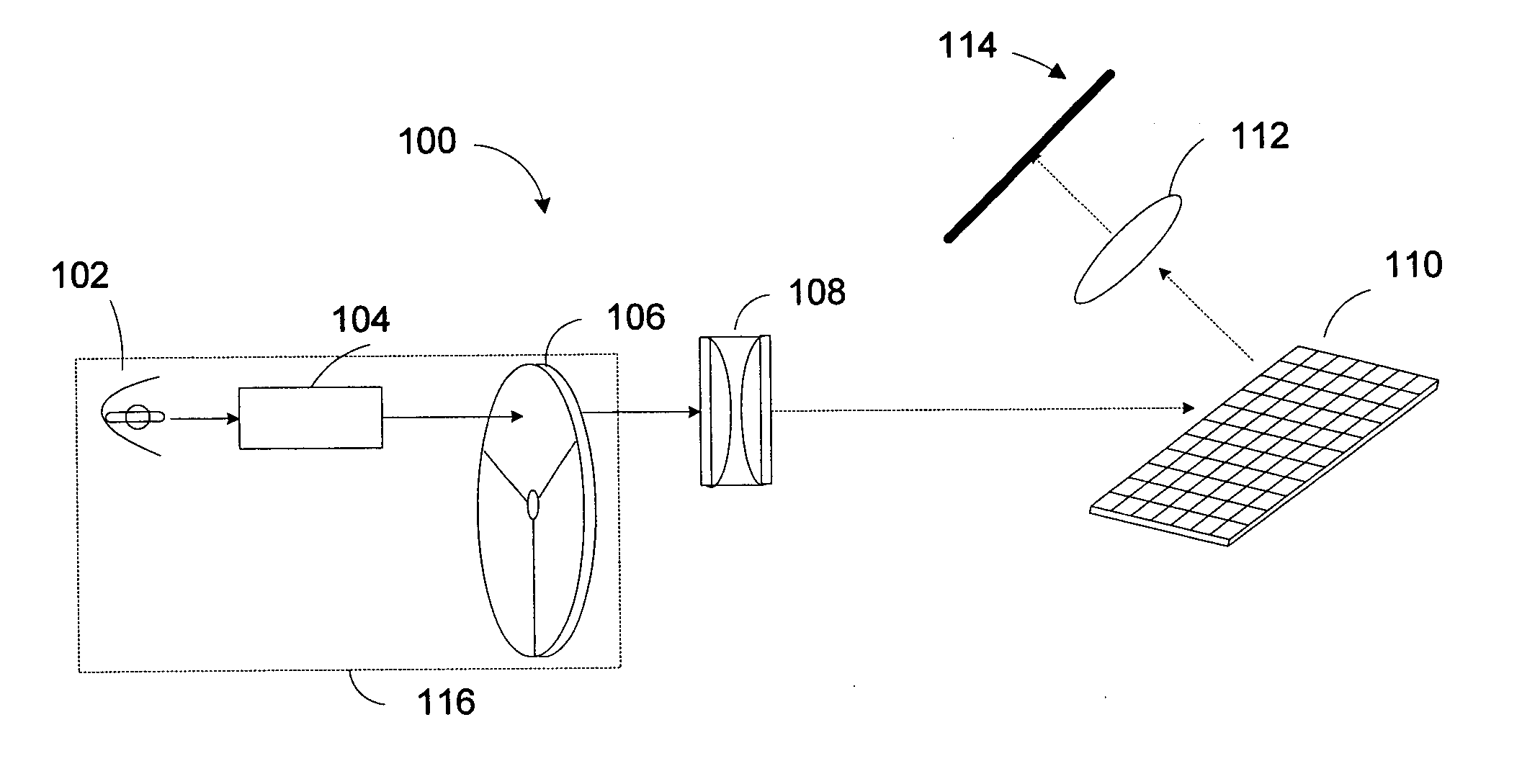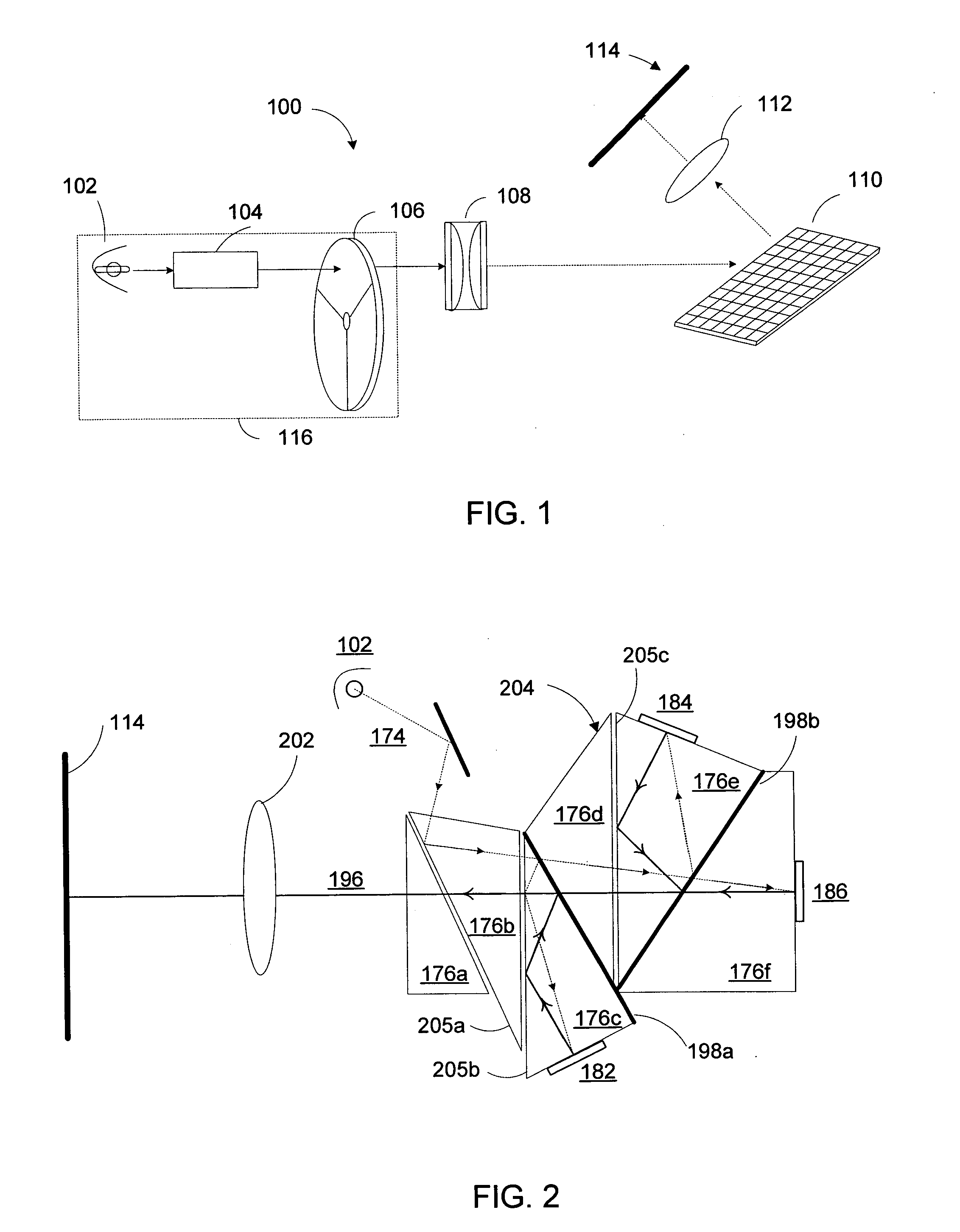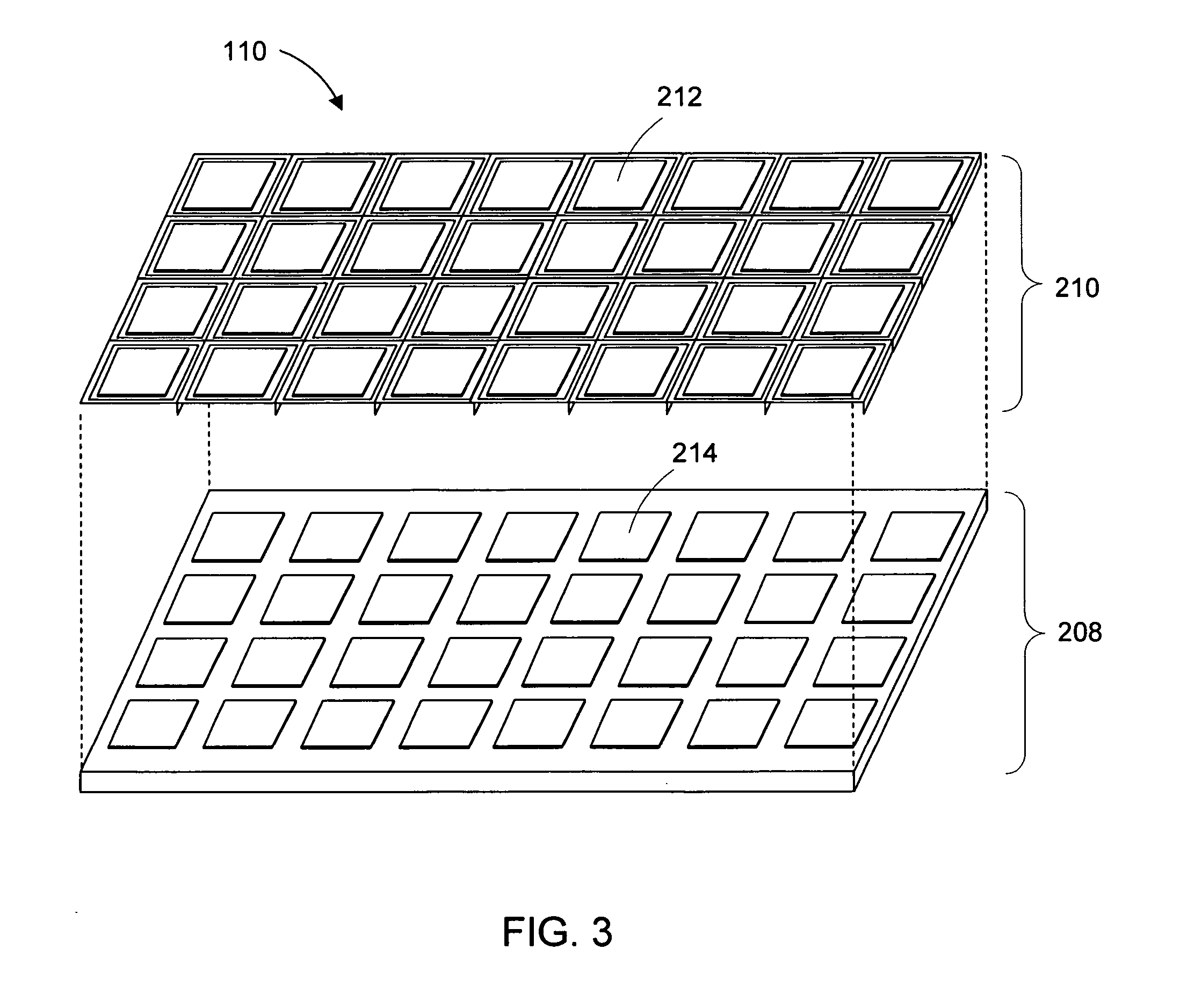Micromirror device and method for making the same
a technology of micromirrors and mirrors, applied in the field of microelectromechanical devices, can solve the problems of low light efficiency of devices and lowering the contrast ratio (modulation depth) of displays
- Summary
- Abstract
- Description
- Claims
- Application Information
AI Technical Summary
Benefits of technology
Problems solved by technology
Method used
Image
Examples
example two
FABRICATION EXAMPLE TWO
[0125] As another way of example in fabricating a micromirror device as discussed with reference to FIG. 7, cross-sectional views of the micromirror in the exemplary fabrication process is illustrated in FIGS. 18a to 18e, and will be discussed in detail in the following.
[0126] Referring to FIG. 18a, substrate 346, which is a single crystal such as single crystal silicon, is provided followed by formation of a cavity therein. Sacrificial material 348, which may or may not be the same as sacrificial layer 326 in FIG. 17b is deposited within the cavity. The single crystal substrate is then attached to handling substrate 352 with an alternative protection layer 350 deposited between the handling substrate and single crystal substrate. The bottom of the cavity is then thinned from the original thickness of H to H′, which is the desired thickness of the deformable hinge. For example, H′ can be 1 micron or less, such as 0.4 microns or less, or 0.3 micron or less. On...
example three
FABRICATION EXAMPLE THREE
[0132] Alternative to the fabrication method as discussed with reference to FIGS. 18a to 18e, another exemplary method for fabricating the micromirror as discussed with reference to FIG. 7 is illustrated in FIGS. 19a through 19f, wherein cross-sectional views of the micromirror during the fabrication are illustrated.
[0133] Referring to FIG. 19a, the substrate 370 is a single crystal, such as single crystal silicon. A cavity is formed and filled with first sacrificial material 372. The first sacrificial material can be the same as the sacrificial material for sacrificial layer 326 in FIG. 17b. The single crystal is then bonded to substrate 374 having addressing electrode 376 formed thereon, as shown in FIG. 19b. The bottom of the cavity is then thinned from the original thickness of T to T′ as the desired thickness of the hinge. For example, the desired thickness T′ of the hinge can be 0.5 micron or less, preferably from 0.1 to 0.45 microns, as shown in FIG....
example four
FABRICATION EXAMPLE FOUR
[0139] The micromirror device of the present invention may have deformable hinge and reflective mirror plate both formed from single crystals. An exemplary fabrication method will be discussed with reference to FIGS. 20a through 20f in the following.
[0140] Referring to FIG. 20a, semiconductor substrate 384 having addressing electrode 386 is provided. Sacrificial layer 388 is deposited on the semiconductor substrate followed by patterning so as to form posts 390 (e.g. posts 248 and 250 in FIG. 8). The posts may be composed of the same material as hinge contact 330 in FIG. 17b, and can also be fabricated using the same method for fabricating hinge contact 330.
[0141] Then hinge 392 which is formed from a single crystal (e.g. single crystal silicon) is attached to, for example through bonding, the hinge contact. As a way of example, the hinge may be developed from a cavity in a single crystal, as discussed with reference to FIGS. 18a and 18b. The cavity can be ...
PUM
 Login to View More
Login to View More Abstract
Description
Claims
Application Information
 Login to View More
Login to View More - R&D
- Intellectual Property
- Life Sciences
- Materials
- Tech Scout
- Unparalleled Data Quality
- Higher Quality Content
- 60% Fewer Hallucinations
Browse by: Latest US Patents, China's latest patents, Technical Efficacy Thesaurus, Application Domain, Technology Topic, Popular Technical Reports.
© 2025 PatSnap. All rights reserved.Legal|Privacy policy|Modern Slavery Act Transparency Statement|Sitemap|About US| Contact US: help@patsnap.com



